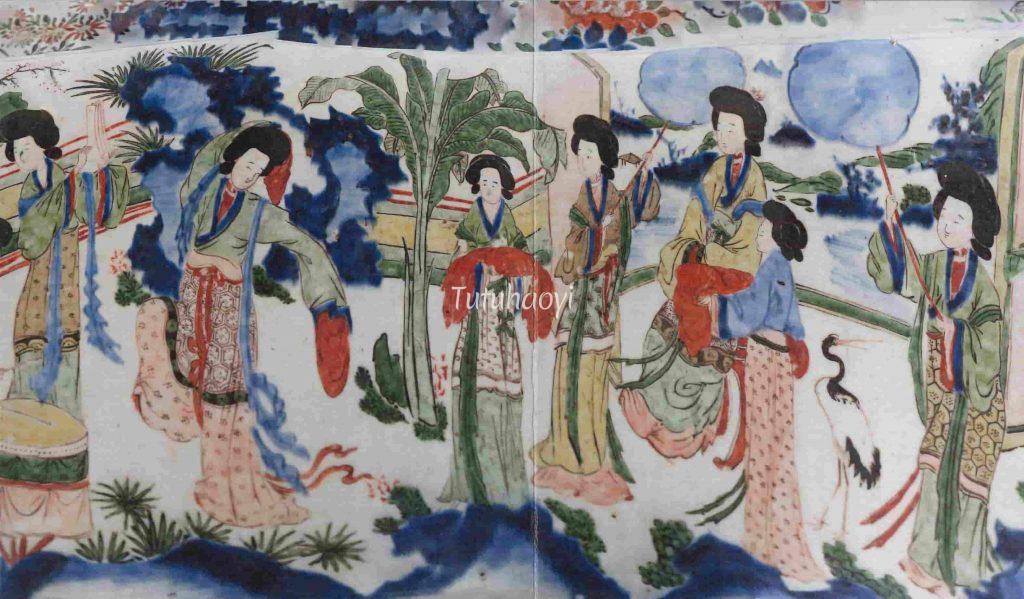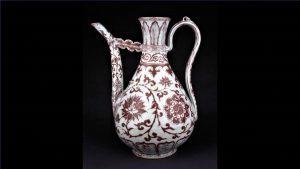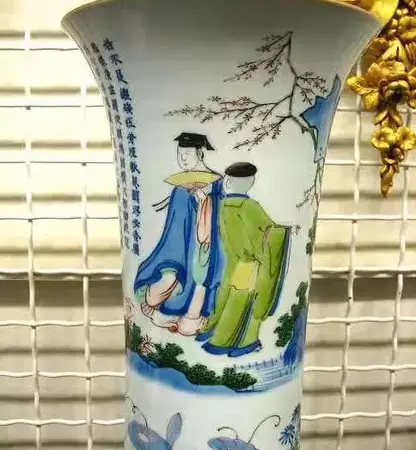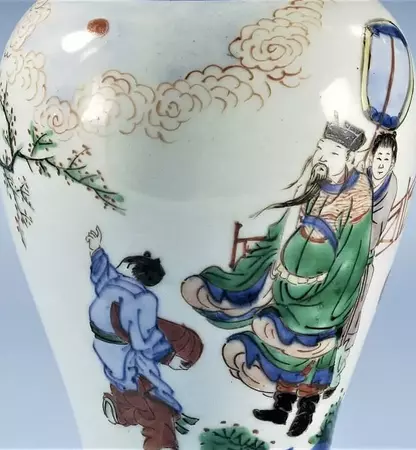This is an overview by Dr Yibin Ni on how the topic of ‘The Birthday Party of the Queen Mother of the West’ was depicted on Chinese artworks, from woodblock print during Ming dynasty to scroll painting and porcelains in Qing dynasty.
featured image above: porcelain jar (detail), Shunzhi period (1644-61), Qing dynasty, courtesy of the Charlottenburg Palace
The scene of ‘The Birthday Party of the Queen Mother of the West’ first appeared on porcelain during the Shunzhi (1644 – 1661) of the Qing dynasty. The scene adorns the exterior of several extant lidded jars decorated in underglaze blue and overglaze polychrome enamels in the collections of Berlin, Dresden and Rijksmuseum.


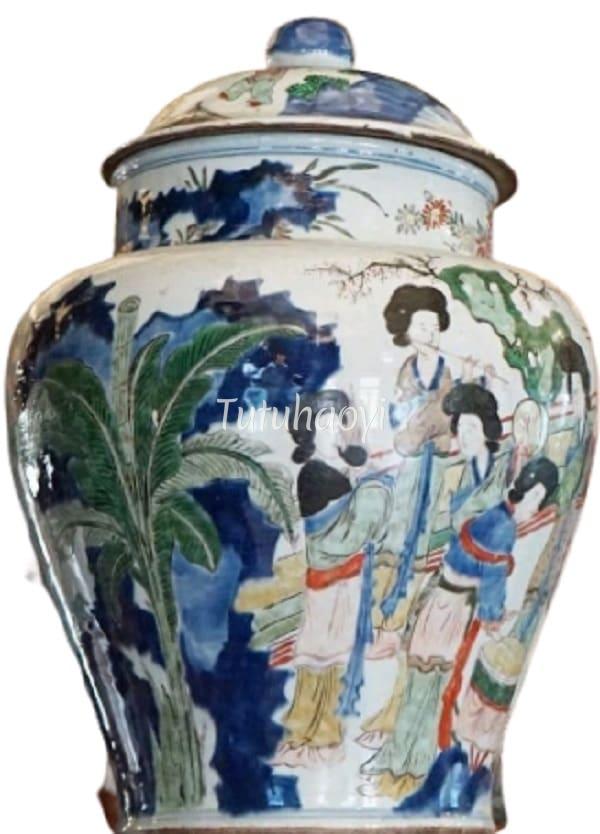

In Zhuangzi (庄子), an ancient Chinese text from the late Warring States period (476–221 BCE) and one of the two foundational texts of Daoism, the Queen Mother of the West (Xiwangmu 西王母) was mentioned as a deity who ‘obtained the Dao (the Way)’. According to the Scripture of Great Peace (Taiping jing 太平经), a valuable resource for researching early Daoist beliefs and the society at the end of the Eastern Han dynasty (AD25 – 220), the Queen Mother of the West was an immortal (xian 仙). In the Six Dynasties period (420 – 589), she was adopted into the pantheon of religious Daoism (Daojiao 道教) as the principal female deity in the Supreme Secret Essentials (Wushang miyao 无上秘要), a Daoist encyclopaedia completed in 577.

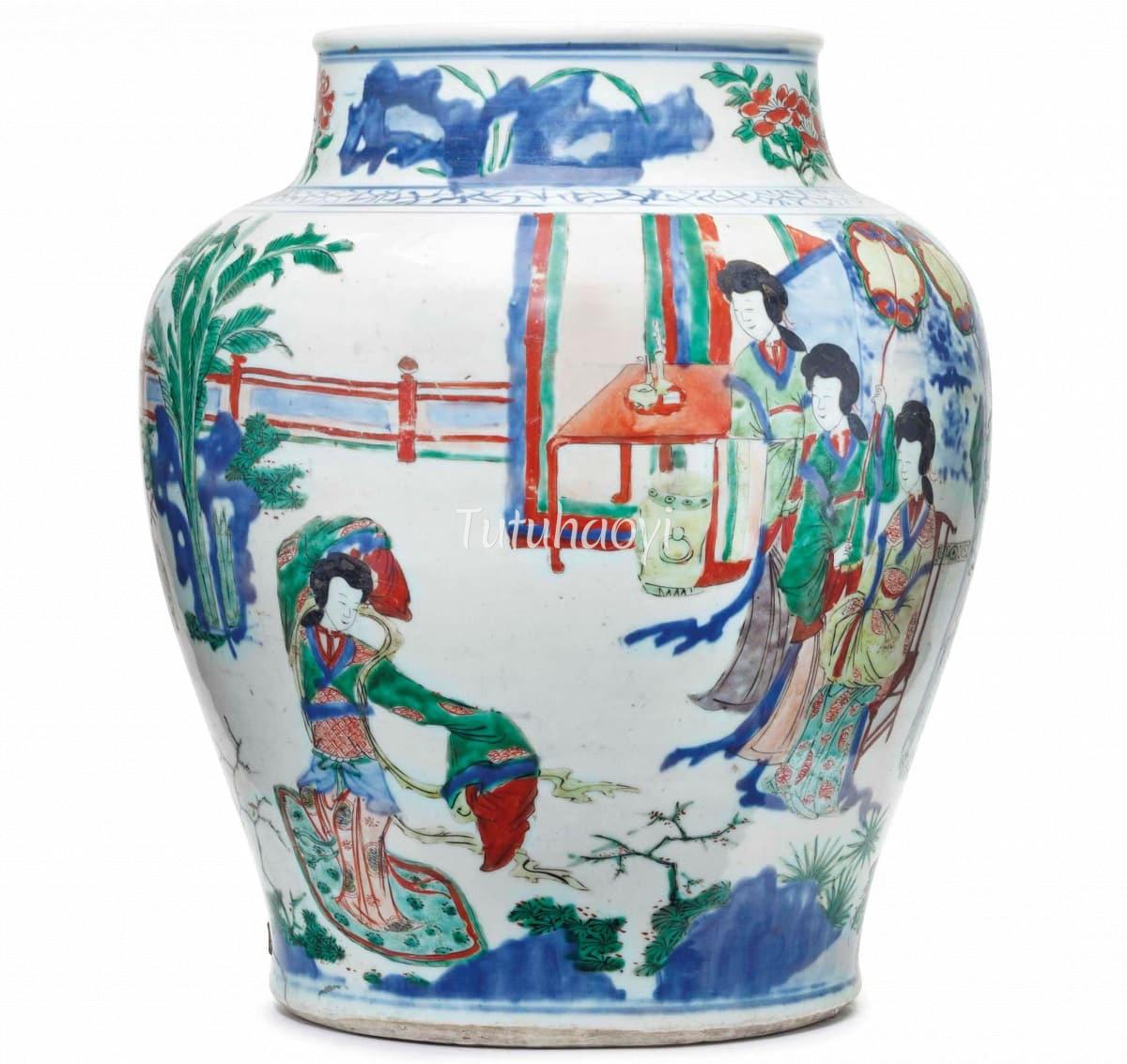
The scene typically consists of three components: first, a female dignitary seated before a screen, flanked by a couple of court ladies and entourage; a dancer gesticulating with her arms, often on a rug; an all-female orchestra playing various kinds of musical instruments.
This pictorial tradition continued during the Kangxi reign of the Qing dynasty (1662-1722). There are examples of blue-and-white plates, jars, and vases adorned with this scene in the State Art Collections of Dresden, Freer Gallery of Art and Victoria & Albert Museum.
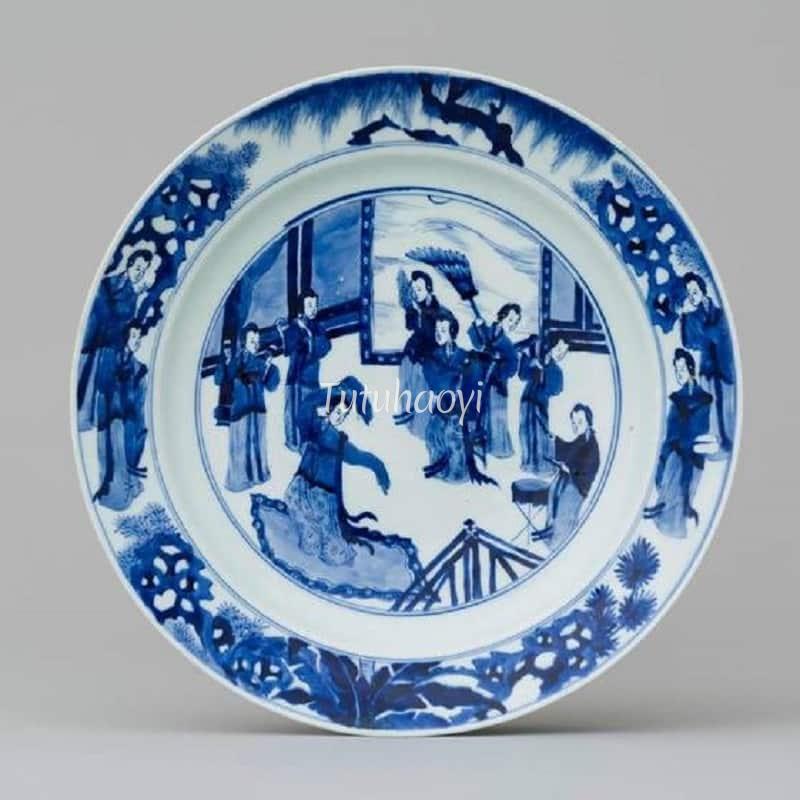
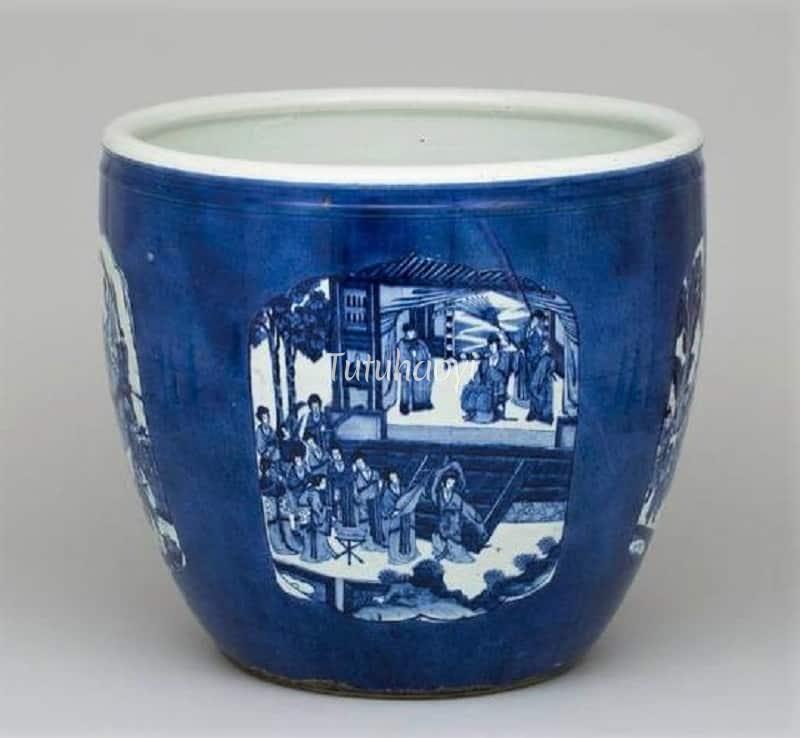



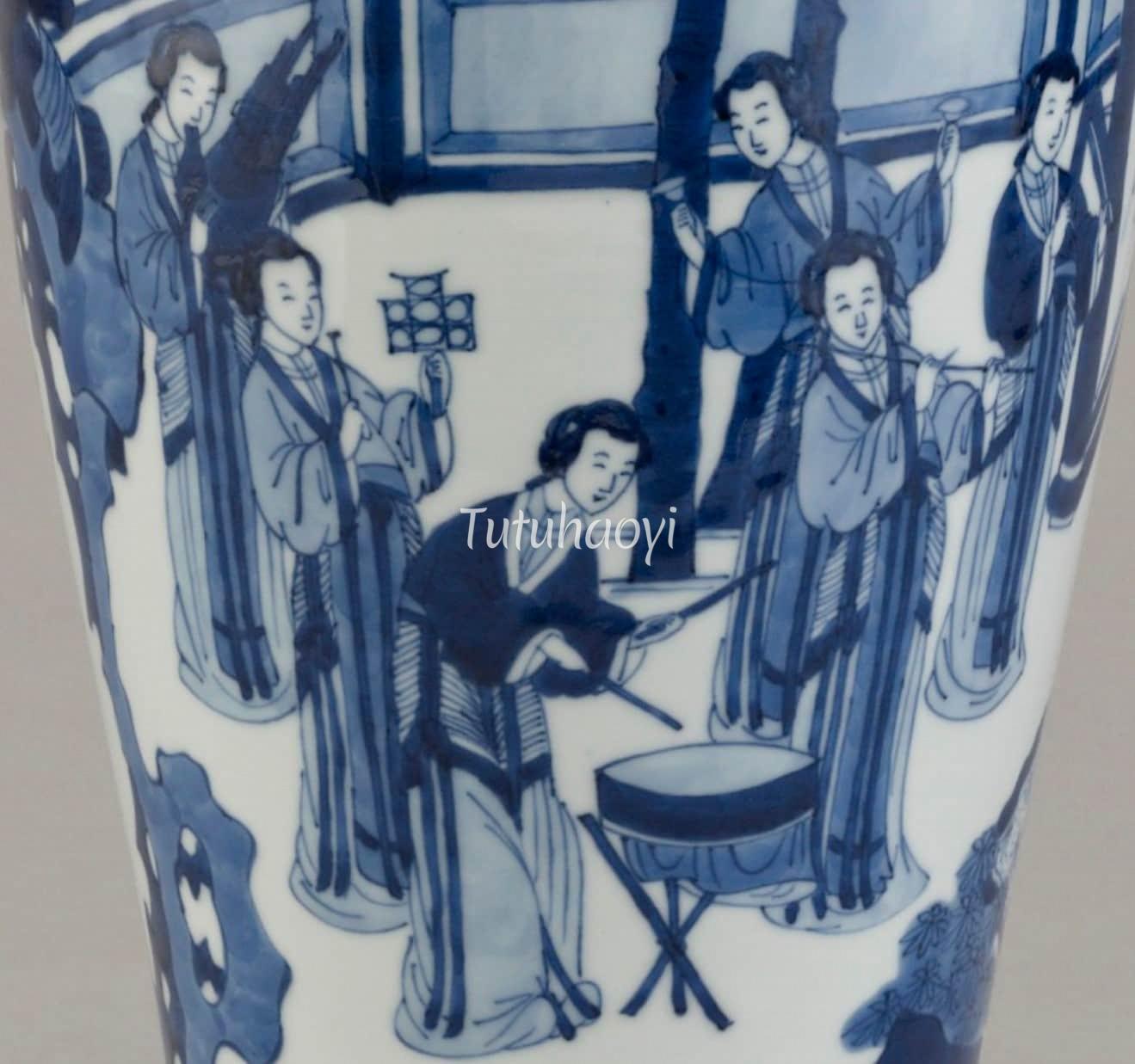
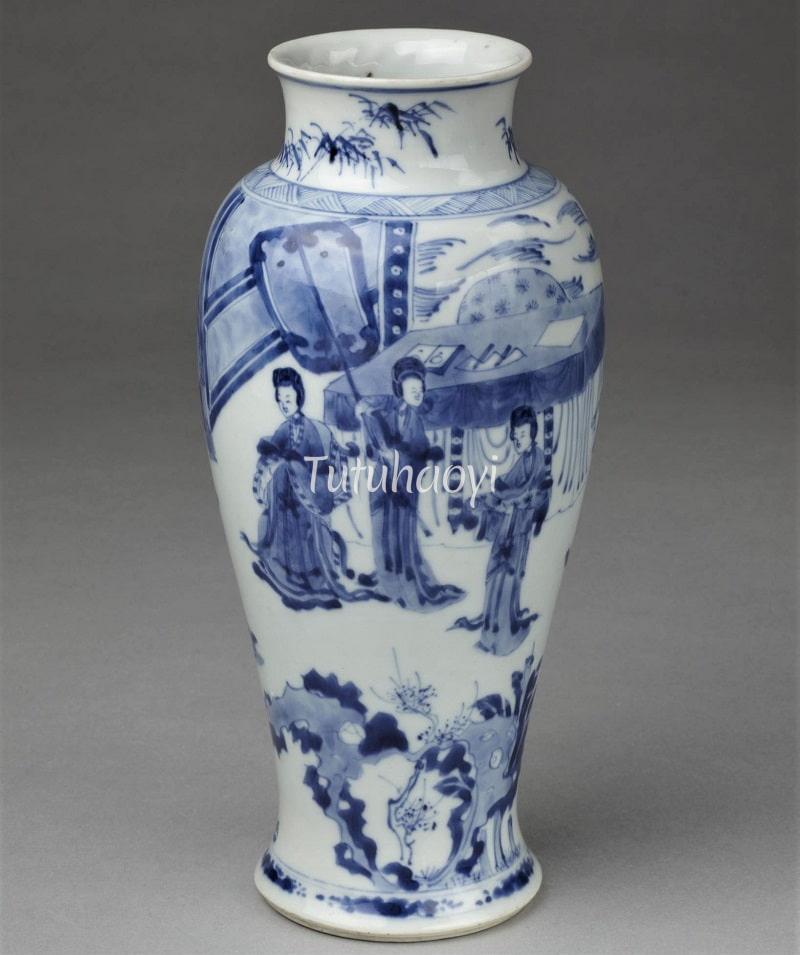
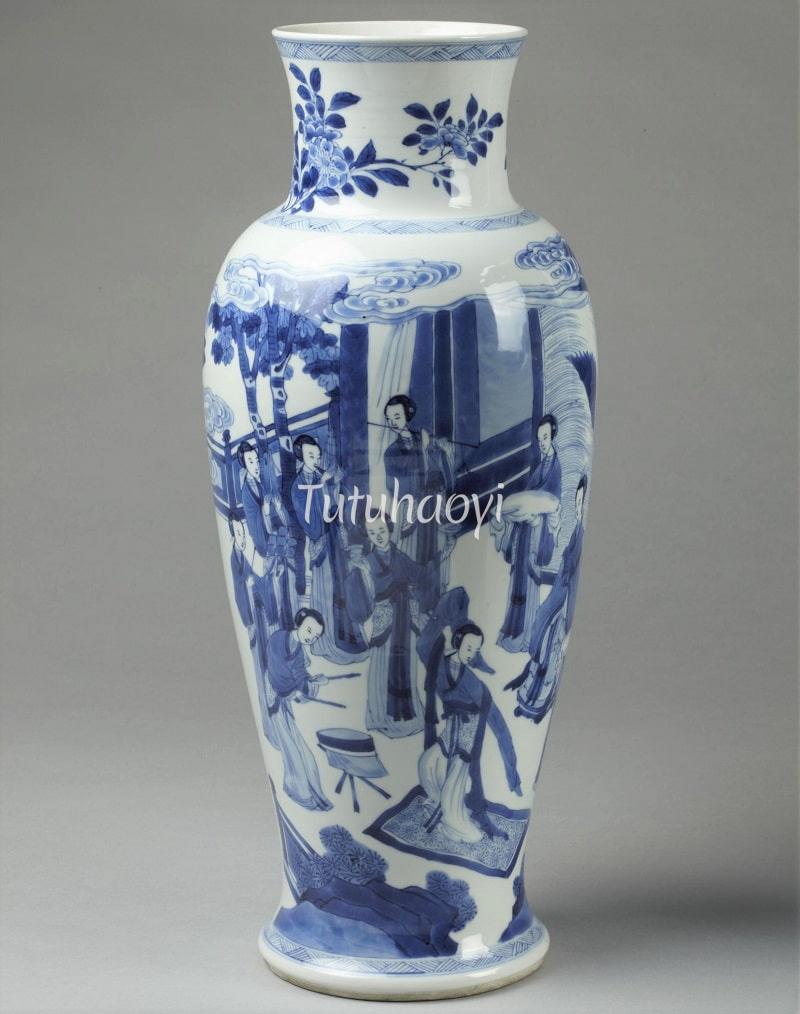
The scene on early-Qing porcelains was evidently adapted from earlier illustrations in the wood-block printed plays variously known as ‘The Queen Mother’s Birthday Party by the Jade Pond’, ‘Immortals Celebrating the Queen Mother’s Birthday at a Saucer-Peach Party’, or the abbreviated ‘The Saucer-Peach Party 蟠桃会’ during the Ming dynasty (1368-1644).
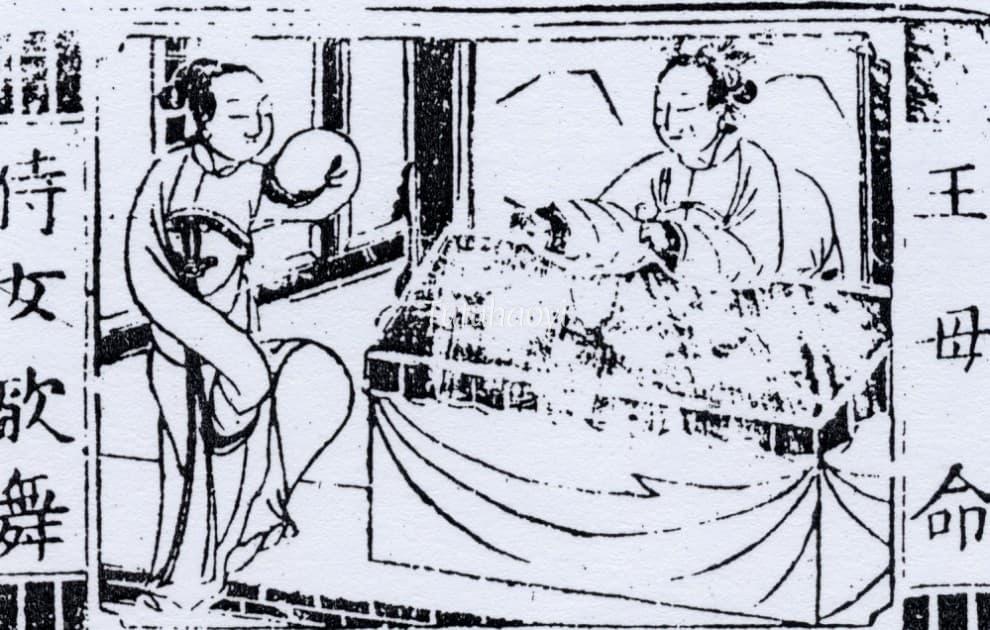
Apart from different versions of the scene found on porcelain pieces, it also appeared as full-scale scroll paintings to be hung in Daoist temples or during Daoist ceremonies, such as the one painted during the Qing dynasty (1644 – 1911).
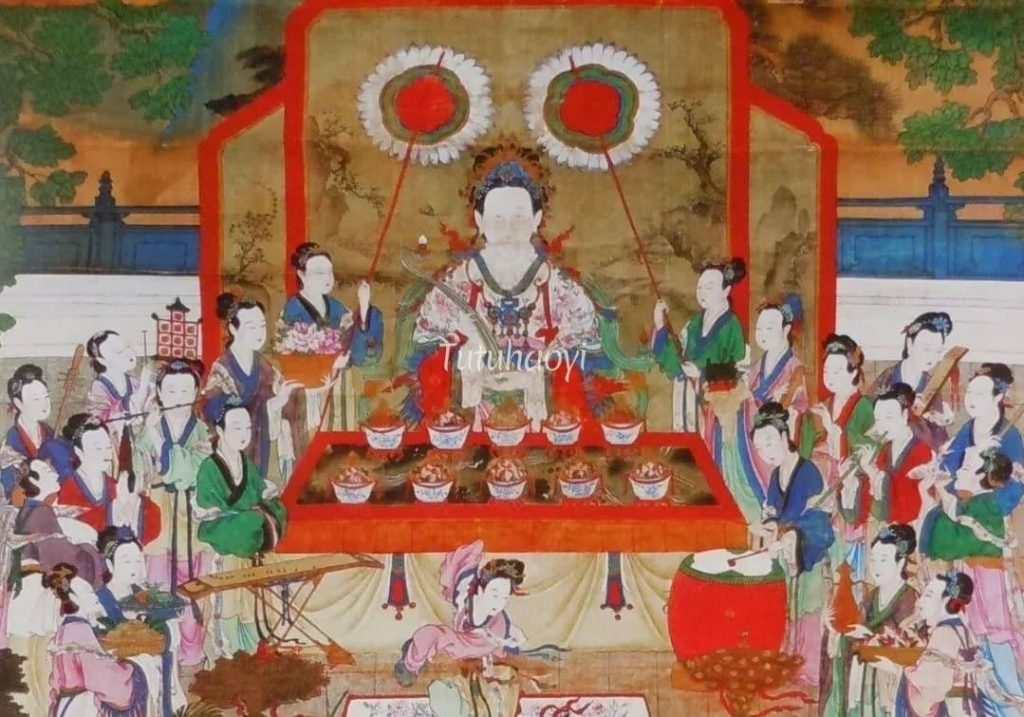
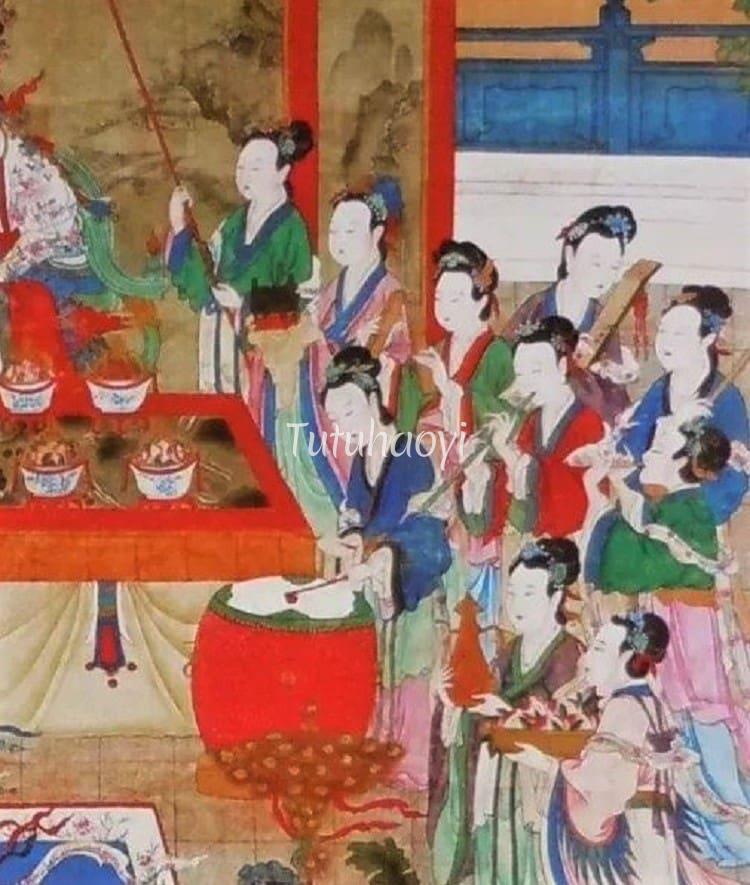
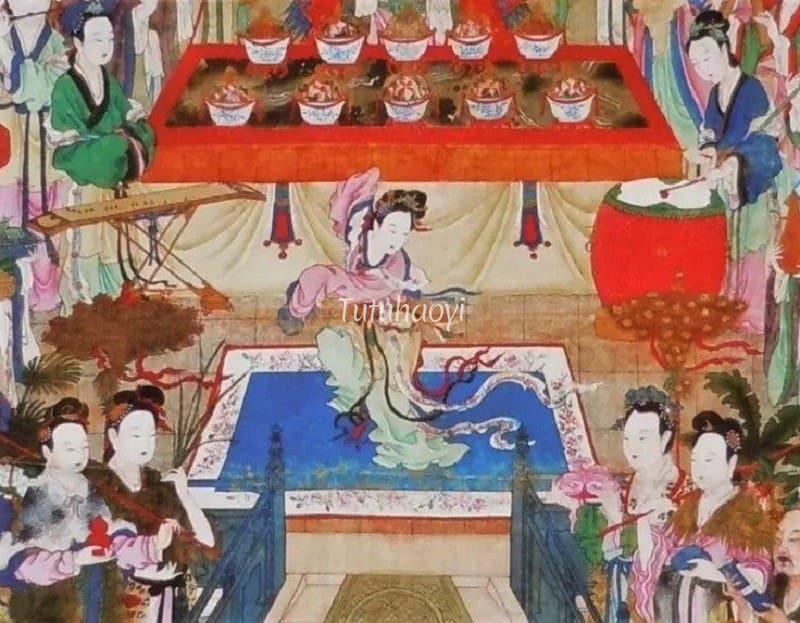
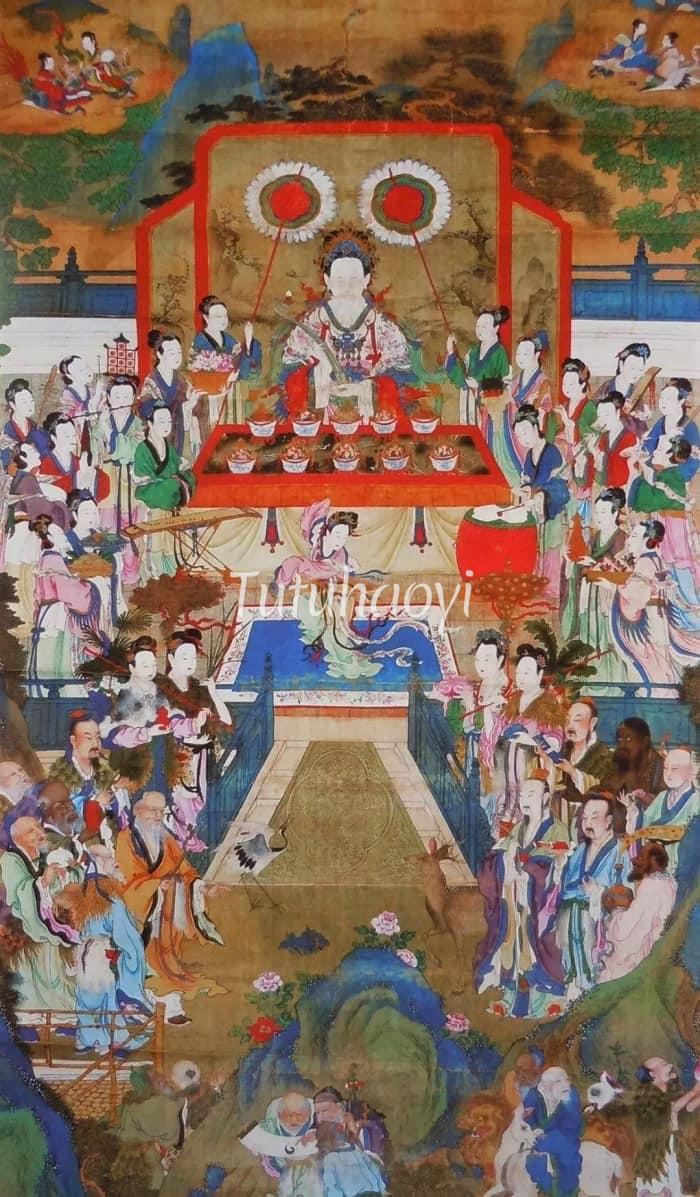
The findings and opinions in this research article are written by Dr Yibin Ni.
